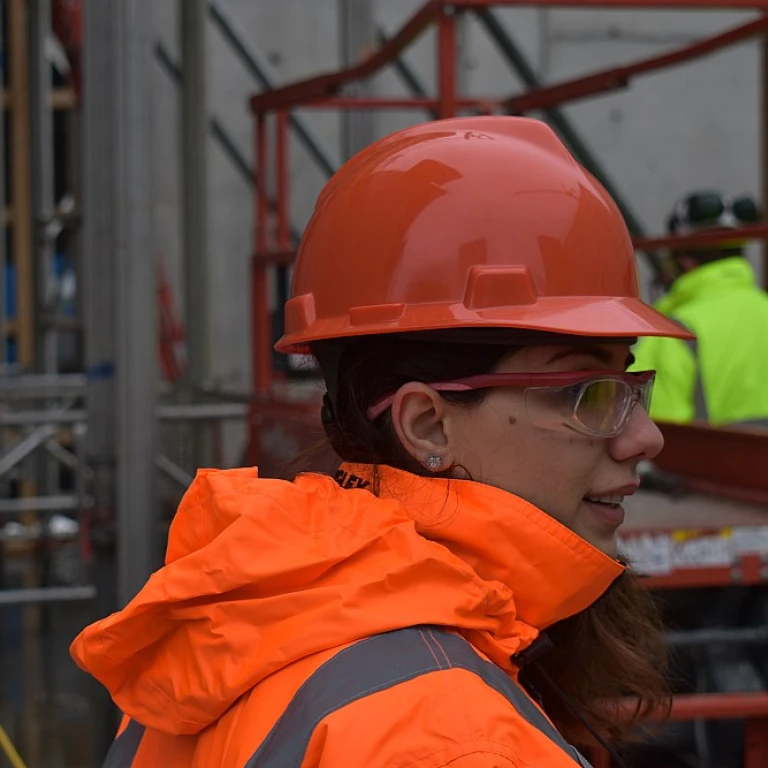Understanding the Skills Gap in Solar Energy
The Present Landscape of Skills Shortage
The solar energy sector is rapidly expanding, driven by both the urgency of climate change and technological advancements in renewable energy. Despite this growth, a skills gap persists, presenting significant challenges in the construction and scaling of solar energy projects.
The current state of this solar energy skills gap is influenced by the rapid pace at which the industry is evolving, and the corresponding lag in the labor force's ability to meet new demands. For instance, utility scale solar projects and large scale installations in states like Texas and Arizona require specialized skills and expertise that are not always readily available.
Furthermore, as companies like McCarthy engage in large projects, including renewable energy and energy storage, the need for competent workers who understand the intricacies of solar power plants and energy storage systems grows exponentially. The McCarthy Building Companies, known for their work on projects such as Swift Current and Black Diamond, often face the challenge of finding skilled professionals, making workforce development a top priority.
McCarthy Solar's Approach to Workforce Development
Strategic Enhancement of Workforce Expertise
Navigating the landscape of solar energy demands innovative solutions to bridge the skills gap that many in the industry face. McCarthy Solar has taken a proactive stance in addressing this challenge, employing a multifaceted approach to workforce development. As a leader in solar project construction, McCarthy Solar recognizes the vital importance of fostering a skilled workforce to support large-scale projects in Texas, Arizona, and across various states.
By working closely with building companies and utilizing expertise from the renewable energy sector, McCarthy Solar tailors its workforce development initiatives to meet the specific needs of utility-scale solar projects. Part of their strategy involves forming strategic partnerships with educational institutions and the Department of Labor, facilitating the creation of apprenticeship programs designed to deliver hands-on experience. Through these programs, individuals are equipped with the necessary skills to excel in solar project construction and management.
The impact of such workforce development initiatives extends beyond just the solar industry. McCarthy Solar's efforts also contribute to the broader renewable energy landscape by ensuring a steady pipeline of qualified professionals capable of meeting the industry’s demands. For a more detailed look into similar initiatives, you can explore how similar companies are making strides in renewable energy workforce development efforts in different regions.
Key Skills Required in the Solar Industry
Crucial Competencies in the Solar Sector
In order to effectively meet the demands of the solar energy industry, it's essential to grasp the array of skills required for success. This burgeoning field is rapidly advancing, particularly with large-scale solar projects across states like Texas and Arizona leading the charge in renewable energy. The industry focuses on several core competencies, drawing from McCarthy Solar's workforce development. Building projects at scale, such as utility scale solar projects, demand a specific skill set. Here's what's crucial:- Technical Knowledge: A firm understanding of solar technology, including MWDC solar technology and energy storage solutions, is vital. Technicians and engineers must be adept at navigating the intricate systems used in solar power plants.
- Project Management: Success in complex construction projects, particularly on utility scale projects, requires sound management skills. Overseeing the logistics of renewable projects, coordinating teams, and maintaining timelines are essential.
- Renewable Energy Policy: Awareness of industry regulations and policies is crucial. Professionals must stay informed about changes to initiatives such as the IRA, which can dramatically impact project planning and funding streams.
- Communication Skills: Effective communication in large teams, comprising various disciplines, powers the successful completion of large scale projects. Technicians, managers, and other stakeholders must work collaboratively to ensure seamless project execution.
- Sustainability Practices: Knowledge of how to implement green technologies and sustainable building practices contributes to the overall value of solar projects. Companies like McCarthy and others prioritize sustainability to enhance the impact of their projects.
Training Programs and Initiatives
Innovative Training Strategies for the Solar Sector
In the quest to bridge the skills gap within the solar industry, training programs and initiatives play a pivotal role. As demand for solar energy projects rises, it is increasingly important for industry players such as McCarthy Solar to align their efforts towards workforce development and capability building. Companies must adopt a multi-faceted approach to training, ensuring that new recruits and existing employees are well-equipped to meet the technical and operational demands of utility scale and renewable energy projects. One effective strategy involves partnerships with education institutions and vocational training centers. Such collaborations not only provide theoretical foundations but also offer hands-on experience in real-life solar project settings. This blend of classroom learning and practical experience is essential for preparing workers to navigate the complexities of the industry, particularly in fast-growing states like Texas and Arizona. Building companies like McCarthy have increasingly recognized the value of apprenticeship programs. These programs are especially beneficial as they allow companies to hire apprentices, providing them with opportunities to learn on the job under the mentorship of experienced professionals. This method of training helps transfer knowledge directly from project veterans to the new generation, creating a seamless transition in skill acquisition and industry readiness. Moreover, apprenticeship models can include specialized focus areas such as energy storage solutions, utility scale operations, and solar project construction management. By focusing on these niche domains, training can better align with projects like Swift Current and Black Diamond, asserting competence in both large scale and smaller installations. Additionally, the development of tailored training curricula that incorporates emerging technologies and innovative construction practices is critical. This includes familiarizing apprentices and seasoned workers alike with advancements in photovoltaic systems, MWDC solar technologies, and IRA compliance, ultimately enhancing their proficiency and readiness for future projects. As the industry evolves with a focus on sustainable solutions and clean energy investments, training initiatives must continue to advance. Ensuring that the solar workforce is prepared for the challenges of building complex power plants and adapting to shifting energy policies is a pathway for success. Developing robust frameworks for ongoing learning and professional development within the renewable energy sphere, McCarthy Solar contributes to setting a benchmark in skill enhancement, fostering a workforce that is adaptable to both present needs and future advancements in solar energy."The Role of Technology in Bridging the Skills Gap
Harnessing Technology to Close the Skills Gap in the Solar Sector
In the dynamic landscape of the solar industry, technology plays a pivotal role in alleviating the skills gap and enhancing workforce capabilities. McCarthy Solar is at the forefront, employing innovative technological solutions to address the evolving needs of solar energy projects. The integration of technology in renewable energy projects has led to more efficient construction processes and has augmented skills development within the workforce. Here's how technology is making a difference:- Advanced Tools and Software: Utilization of state-of-the-art software and tools in large scale projects, including utility scale solar installations, ensures precision and efficiency. For instance, software that aids in the design and management of solar power plants streamlines operations, allowing teams to work more effectively.
- Online Training Platforms: McCarthy and other building companies in the solar industry leverage online training modules to upskill their personnel, ensuring they are equipped with the latest knowledge in energy storage systems, renewable technologies, and project management.
- Data Analytics: The use of data analytics in monitoring solar projects enables companies to identify skill gaps quickly and tailor their training programs accordingly. This ensures that project requirements are aligned with the skill sets available, facilitating continuous growth in clean energy implementation.
- Automation and Robotics: Automation processes reduce the manual labor required in energy projects, allowing workers to focus on more skill-intensive tasks. This transition not only enhances productivity but also promotes a safer working environment at construction sites.
Future Prospects for Solar Energy Careers
The Horizon of Opportunities in the Solar Sector
The future for careers in solar energy is filled with promise and potential. As noted, the solar industry is a rapidly evolving field, driven by a global push towards renewable energy and sustainability. Companies like McCarthy Solar play a crucial role in powering this momentum by building large-scale solar projects that meet the increasing demand for clean energy. Looking ahead, the career landscape in solar energy will likely become even more dynamic with a growing emphasis on utility-scale projects in states like Texas and Arizona. The expansion of renewable energy initiatives anticipates a surge in opportunities for skilled professionals. Moreover, innovations in solar technology, energy storage, and clean power plants continue to create new roles and demand for expertise in these areas.- Emerging Trends: Government policies like the IRA (Infrastructure Reinvestment Act) and upticks in state-level renewable incentives provide fertile ground for solar projects. This involvement translates into more job creation in construction, project management, and maintenance of solar power plants.
- Technological Advancements: Technology's role in bridging the skills gap cannot be understated. As projects become more complex and integrate cutting-edge technologies, such as diamond solar panels and energy storage solutions, there's a heightened need for individuals with advanced technical skills and adaptive expertise.
- Collaborative Growth: Partnerships between companies, educational institutions, and the Department of Labor will be essential in readying the future workforce. By fostering partnerships, McCarthy and other building companies will hire and nurture talents, ensuring skills meet industry needs.











